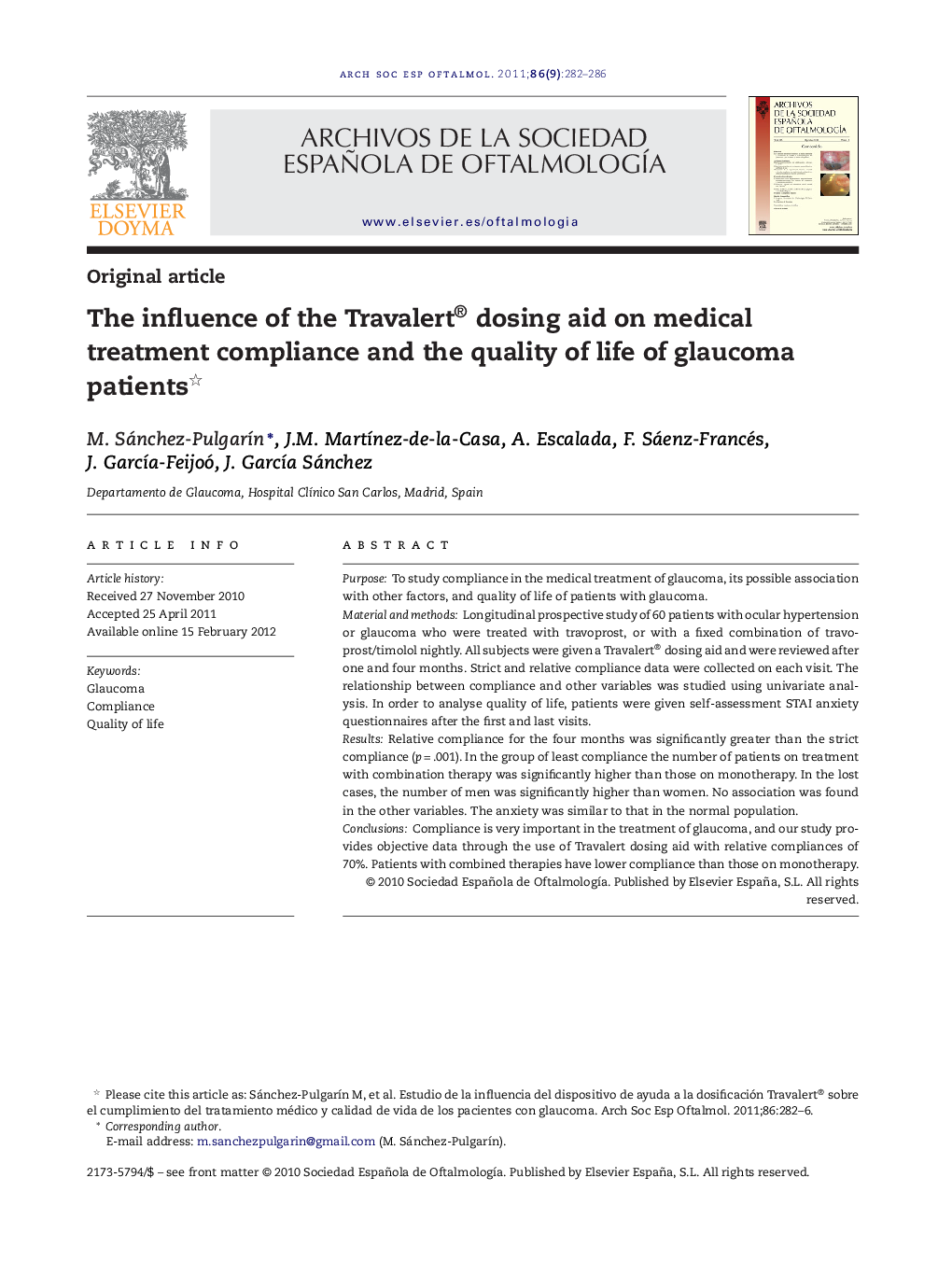| Article ID | Journal | Published Year | Pages | File Type |
|---|---|---|---|---|
| 4008623 | Archivos de la Sociedad Española de Oftalmología (English Edition) | 2011 | 5 Pages |
PurposeTo study compliance in the medical treatment of glaucoma, its possible association with other factors, and quality of life of patients with glaucoma.Material and methodsLongitudinal prospective study of 60 patients with ocular hypertension or glaucoma who were treated with travoprost, or with a fixed combination of travoprost/timolol nightly. All subjects were given a Travalert® dosing aid and were reviewed after one and four months. Strict and relative compliance data were collected on each visit. The relationship between compliance and other variables was studied using univariate analysis. In order to analyse quality of life, patients were given self-assessment STAI anxiety questionnaires after the first and last visits.ResultsRelative compliance for the four months was significantly greater than the strict compliance (p = .001). In the group of least compliance the number of patients on treatment with combination therapy was significantly higher than those on monotherapy. In the lost cases, the number of men was significantly higher than women. No association was found in the other variables. The anxiety was similar to that in the normal population.ConclusionsCompliance is very important in the treatment of glaucoma, and our study provides objective data through the use of Travalert dosing aid with relative compliances of 70%. Patients with combined therapies have lower compliance than those on monotherapy.
ResumenObjetivosEstudiar el cumplimiento en el tratamiento médico del glaucoma y su posible asociación con otros factores, así como la calidad de vida de los pacientes con glaucoma.Material y métodosEstudio prospectivo longitudinal en 60 pacientes con hipertensión ocular o glaucoma que recibían tratamiento con travoprost o con la combinación fija travoprost/timolol todas las noches. Se les entregó a todos los sujetos el dispositivo Travalert de ayuda a la dosificación y se les revisó al mes y al cuarto mes recogiendo el cumplimiento estricto y relativo en cada visita. Mediante un análisis univariante se estudió la relación entre el cumplimiento y otras variables.Para analizar la calidad de vida, se entregó a los pacientes el cuestionario de autoevaluación de ansiedad STAI en la visita de entrada y en la de salida.ResultadosEl cumplimiento relativo a los cuatro meses fue significativamente mayor que el estricto (p = 0,001). En el grupo de menor cumplimiento el número de pacientes que recibía terapia combinada resultó significativamente mayor que en el de aquellos que recibían monoterapia. Al estudiar los casos perdidos, el número de hombres fue significativamente mayor que el de mujeres. No se encontró asociación estadística en el resto de variables. La ansiedad fue similar a la población normal.ConclusionesEl cumplimiento es de vital importancia en el tratamiento del glaucoma, nuestro estudio aporta datos objetivos mediante el sistema electrónico Travalert porque muestra un cumplimiento relativo del 70%. Los pacientes con terapias combinadas presentan menor cumplimiento que aquellos en monoterapia.
